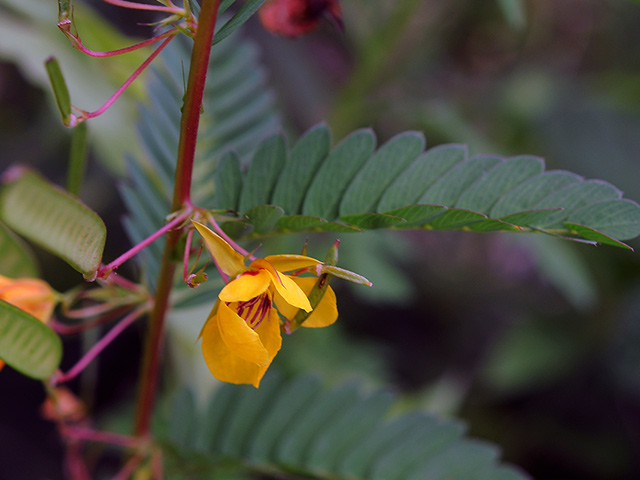
| Photos © Kim Hosen; Merrimac Farm Wildlife Managemen Area, Nokesville VA; August 2008 Text by Aubrey D. Gann |
Partridge Pea The Partridge pea is a legume plant that can grow to a height between 1 and 3 feet. This plant has yellow flowers that get roughly 1 inch in size and are grouped in clusters of 2 to 4, they bloom from July to September under normal conditions. They are a fruit producing plant producing straight narrow pods that average in size between 1.5 to 2.5 inches in length. The Partridge pea grows best in full sun but can thrive in partial shade and is generally found in areas such as prairies, bluffs, riverbanks and bottoms, as well as sandy savannahs. Generally these plants will grow in sandy to sandy loam soils and easily tolerate stressful conditions and low water availability. When the plant establishes it will often grow in dense stands that provide cover for birds both game and non-game, small mammals and waterfowl. Partridge pea is also an important plant for honey production offering nectar from small orange glands at the base of the leaves rather than the flowers. Ants and bees are frequent visitors to these plants and the common sulfur butterfly will frequently deposit eggs on the leaves from which the larvae will later eat. These plants are great for erosion control on banks and are frequently considered and used in restoration of disturbed areas as well as being highly ornamental, caution should be taken however as in large quantities the partridge pea can be poisonous to livestock in particular cattle. |






